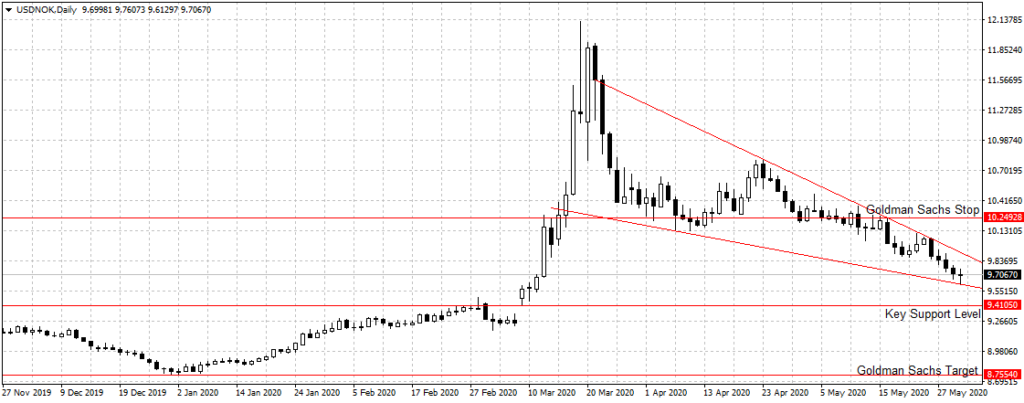Finance
Goldman Sachs Sees Weak Dollar As Economies Reopen
- Goldman Sachs Sees Weak Dollar As Economies Reopen
Goldman Sachs, one of the world’s leading investment banks, has started taking short positions on the US dollar as more economies reopen for business.
In a note issued over the weekend, Goldman Sachs said shorting the US dollar looks attractive against certain currencies.
According to the investment bank, reopening economies would lure people out of haven currencies, especially with limited evidence of new COVID-19 infection rates and encouraging policy actions in Europe.
In particular, the bank predicted that Norwegian Krone will outperform during the remainder of the COVID-19 pandemic. Therefore, suggested shorting US/NOK pair with a take profit target at 8.75 krone to the US dollar but advised to get out if the European currency depreciated to 10.25 against the greenback.
Short selling a currency involves borrowing that currency, selling it at the current market price and then waiting for the price to fall in order to buy the currency back at a lower price and return the loan. The short seller therefore profits if the currency depreciates over that time period.
“(Norway’s) demographics and domestic medical infrastructure make it better equipped for the outbreak than many other countries, and its strong fiscal position puts it at a distinct advantage,” Goldman analysts, led by co-heads of global foreign exchange, Zach Pandl and Kamakshya Trivedi, said in the note on Sunday.
“While others are forced to either limit their fiscal policy support or dramatically increase borrowing—both potentially currency negatives—Norway is able to repatriate funds from its investments abroad (today, Norway announced that it will increase daily transactions even further, from NOK 2.1bn to NOK 2.3bn), helping support the economy and the currency.”
 A technical look into the pair shows a sustainable break of the descending trendline (bullish wedge) is necessary to valid bearish continuation while a break below 9.4 support level that doubled as the top of March gap as shown above is imperative for 8.75 support levels predicted by the investment bank.
A technical look into the pair shows a sustainable break of the descending trendline (bullish wedge) is necessary to valid bearish continuation while a break below 9.4 support level that doubled as the top of March gap as shown above is imperative for 8.75 support levels predicted by the investment bank.